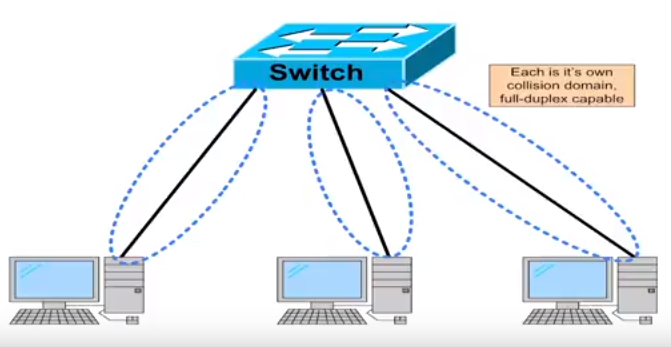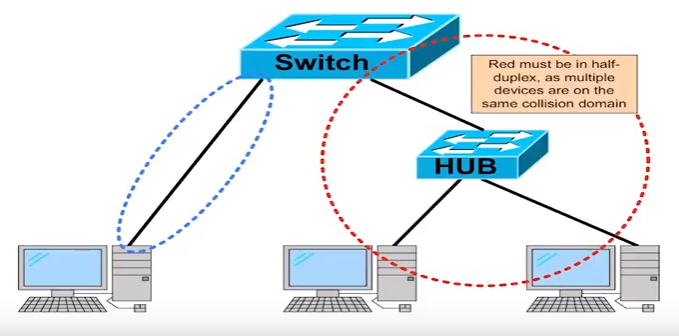What is a switch?
- Switches are like bridges on steroids.
- Every individual port is its own collision domain which allows your network to be more efficient in how devices communicate.
- They can have many many ports so depending upon the switch you can have you know 32 ports all the way up to hundreds of ports.
- They have larger memory than a bridge.
- Have Faster processing because things are done in hardware versus software and all the decisions are made inside of that hardware.
LAN Segmentation:
The reason we use switches is in most cases to provide LAN segmentation. Switches and bridges are used to segment LAN and reduce collision domains.
- Bridges isolate into only two collision domains
- Where as each switch port can be its own collision domain
A LAN is all part of the same broadcast domain but remember a simple definition of a LAN is all the same broadcast domain. So we only separate the collision domains with a switch.
To demonstrate that in this scenario we’re showing individual hosts connected to individual ports on a switch and each port is its own collision domain allowing that host to have access to the full bandwidth of that link.
Now can we mix hubs and switches? Sure, we can and if we do it’s going to have an effect on our network. In this case the host on the left is in its own collision domain.
By connecting a hub to our switch port, we now make a larger collision domain where each one of those hosts is part of that collision domain because a hub is just a repeater.
Unmanaged Switches Vs Managed Switches
There are two types of switches: unmanaged switches and managed switches. Unmanaged switch is basically a dumb switch. All the interfaces are in the same broadcast domain but once again you have separate collision domains and it does not run higher-level protocols like spanning tree and it will not forward multicast.
Managed switch allows the user to program in functionality. It has many enhanced features such as security, traffic control and quality of service (QoS) and can be either a layer 2 switch or a layer 3 switch.
Layer 3 Switch can basically route between networks or in some cases virtual networks. We are able to configure these separate virtual networks to further segment the traffic on the switch and individual ports are able to be assigned to different virtual broadcast domains.

